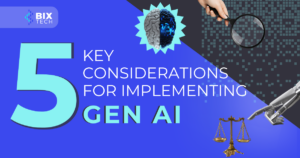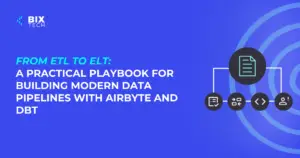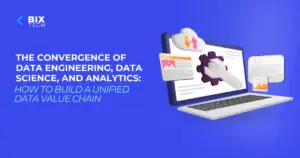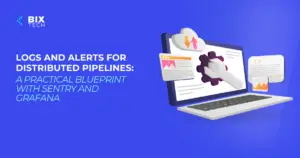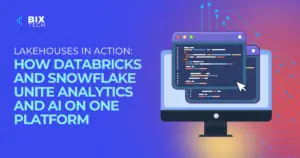Data Pipelines Explained: The Backbone of Modern Data-Driven Business

Sales Development Representative and excited about connecting people
In today’s fast-paced digital world, the phrase “data pipeline” is everywhere. But what are data pipelines, and why do they matter so much in the age of big data, artificial intelligence, and analytics? Whether your business is a growing startup or an established enterprise, understanding data pipelines is crucial for harnessing the full value of your data.
In this comprehensive guide, we’ll break down what data pipelines are, how they work, and why they’re essential for modern business success. Plus, we’ll share practical tips and real-world examples to help you get the most out of your data pipeline strategy.
What Is a Data Pipeline?
A data pipeline is a series of processes that automate the movement and transformation of data from one system to another. Imagine it as a conveyor belt for data: raw information is collected from various sources, processed, cleaned, and then delivered to a destination like a data warehouse, analytics dashboard, or machine learning model.
Key Components of Data Pipelines
- Data Sources: The starting points—these can be databases, APIs, logs, IoT devices, or cloud storage.
- Ingestion: The process of collecting and importing data from sources, often in real time.
- Processing and Transformation: Cleaning, filtering, aggregating, and converting data into usable formats.
- Storage: Where processed data is stored, usually in data warehouses, data lakes, or databases.
- Analytics and Consumption: The final destination—business intelligence tools, dashboards, or AI models that use the data for insights and decision-making.
Why Data Pipelines Matter for Business
Data pipelines are more than just IT plumbing. They are the foundation that enables your business to be data-driven, agile, and competitive. Here’s why:
1. Automation and Efficiency
Manual data handling is error-prone and time-consuming. Data pipelines automate repetitive tasks, ensuring data flows smoothly and reliably. This frees up your team to focus on higher-value work, such as analysis and strategy.
2. Real-Time Insights
Modern businesses need up-to-the-minute data to make smart decisions. Real-time data pipelines enable continuous data flow, supporting instant dashboards and live analytics. This is especially important for industries like e-commerce, finance, and logistics.
3. Scalability
As your business grows, so does your data. Well-designed pipelines can handle increasing volumes and complexity, whether you’re processing millions of transactions or integrating new data sources.
4. Data Quality and Consistency
Automated pipelines enforce data validation and transformation rules, reducing inconsistencies and errors. Clean, reliable data means better analytics and more confident business decisions.
Common Types of Data Pipelines
Not all pipelines are created equal. Let’s explore the most common types:
1. Batch Pipelines
- How they work: Gather and process data in scheduled chunks (e.g., nightly updates).
- Best for: Large volumes of historical data, periodic reporting, or data that doesn’t change frequently.
- Example: A retail chain updates its sales dashboard every morning with the previous day’s transactions.
2. Real-Time (Streaming) Pipelines
- How they work: Process data instantly as it arrives.
- Best for: Applications requiring immediate insights, such as fraud detection or real-time recommendations.
- Example: A fintech app flags suspicious transactions seconds after they occur.
3. Hybrid Pipelines
- How they work: Combine batch and real-time processes for maximum flexibility.
- Best for: Businesses needing both historical and immediate insights.
- Example: An e-commerce site that provides real-time inventory updates but also runs weekly sales trend analysis.
Building Blocks: Technologies Powering Data Pipelines
There’s no one-size-fits-all solution, but some tools and platforms stand out:
- ETL Tools: Extract, Transform, Load platforms like Apache Airflow, Talend, or Informatica.
- Streaming Frameworks: Apache Kafka, Apache Flink, and AWS Kinesis for real-time data.
- Data Warehouses: Amazon Redshift, Google BigQuery, Snowflake.
- Data Lakes: Hadoop, Azure Data Lake, Amazon S3.
Each technology has its strengths and is chosen based on your business’s specific needs, data volume, and use cases.
Real-World Applications of Data Pipelines
To see pipelines in action, let’s explore a few practical business scenarios:
1. E-Commerce Personalization
Data pipelines collect user browsing and purchase data in real time, process it, and feed it to recommendation engines. The result? Shoppers receive tailored product suggestions instantly, increasing sales and customer satisfaction.
2. Manufacturing Quality Control
Sensors on production lines stream data into real-time pipelines that flag anomalies. This enables immediate interventions, reducing defects and downtime. Discover more about how AI is transforming modern manufacturing with intelligent automation.
3. Healthcare Analytics
Patient data from multiple sources is ingested, cleaned, and made available to doctors and researchers through secure, compliant pipelines. This improves patient outcomes and supports medical research.
Best Practices for Data Pipeline Success
To reap the full benefits of your data pipeline investment, consider these practical tips:
1. Design for Scalability and Flexibility
Your pipeline should adapt as your business and data needs evolve. Modular designs and cloud-native tools make it easier to scale.
2. Prioritize Data Quality
Implement validation and cleansing steps at every stage to catch errors early. Remember: bad data in means bad insights out.
3. Monitor and Maintain
Set up alerts and dashboards to track pipeline performance, failures, and bottlenecks. Proactive monitoring minimizes downtime and keeps your data flowing.
4. Secure Your Data
Data pipelines often handle sensitive information. Encrypt data in transit and at rest, enforce access controls, and comply with regulations like GDPR or HIPAA. Learn more in our guide to data privacy in the age of AI.
Data Pipelines and the Future of Business
Data pipelines aren’t just a technical necessity—they’re a strategic asset. As businesses increasingly rely on artificial intelligence, machine learning, and advanced analytics, robust pipelines become even more critical. They enable organizations to unlock insights, respond to market changes swiftly, and innovate with confidence.
For companies eager to become truly data-driven, investing in the right data pipeline architecture is non-negotiable. Whether you’re just starting out or looking to optimize your existing setup, mastering data pipelines is key to building a competitive edge.
Ready to Build or Optimize Your Data Pipelines?
Understanding data pipelines is just the beginning. To turn your business into a data-driven powerhouse, you’ll need a strategy that aligns with your goals, resources, and future growth.
Want to dive deeper into the world of data-driven business? Check out our in-depth article on the business revolution powered by data science for more insights and next steps.
Conclusion
Data pipelines are the unsung heroes of modern business—quietly powering the insights, decisions, and innovations that drive success. By investing in robust, scalable, and secure pipelines, you set the stage for smarter decisions, greater agility, and sustained growth. The future belongs to businesses that can turn their data into actionable intelligence—and it all starts with the right pipeline.
Have questions about building or optimizing your data pipelines? Reach out today and let’s unlock the full potential of your business data!



